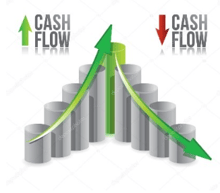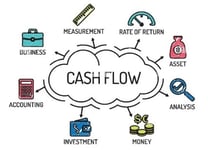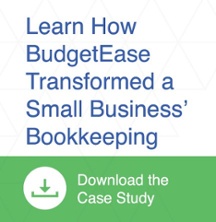
Your business's cash flow is important when assessing flexibility, liquidity, and overall financial performance. Cash flow refers to cash and cash equivalents (CCE) received by your business - inflow - and spent by your business - outflow. The information is compiled in a standard financial document known as the 'statement of cash flows' or 'cash flow statement'. This article will help walk you through the components and analyze a cash flow statement to better suit your business!
Three Categories of Cash Flows
Cash Flow from Operations (CFO)
-
- This is cash generated from normal business operations and spent on operational expenses.
- To calculate CFO, you would determine cash from sales and subtract it from cash expenses from cost of goods sold, overhead, and salaries.
- Your operating cash flow is important because it indicates whether your business has enough funds to cover bills or operating expenses. It can even help determine whether external financing is necessary, or whether your business have room to expand.
Cash Flow from Investing (CFI)
-
- CFI refers to cash received or spent on investment-related activities.
- Examples of investment activities include security investments, sale of securities or assets, and purchases of non-productive assets.
- Your CFI is useful in determining how much cash your company is allocating towards the long-term. A negative CFI is not necessarily a red flag; it can indicate that your company is investing long-term to promote stability and growth.
Cash Flow from Financing (CFF)
-
- CFF is your business' cash movement between the owners and company, tracking the net flows of cash used to fund the business and capital.
- Issuing debt and equity and paying dividends are examples of CFF.
- This section of the cash flow statement represents your business's strength and management of capital. A positive CFF is indicative of optimal management; a negative CFF may arise from servicing debt but may also demonstrate debt repayment and stock repurchases.
Key Points of Cash Flow Statements to Remember
There are a few important points to remember about to cash flow statement that can help with analysis, including:
-
- Cash flow does not show all of your business expenses - liabilities arising from later payments are not recorded on the cash flow statement until the transaction occurs.
- Cash flow is not profit - profit is the left-over amount when subtracting your business' revenue from its expenses. Cash flow refers to the inflow and outflow of money.
- Numbers from the balance sheet and income statement are included in the statement of cash flows. For example, the last line of the cash flow statement 'CCE at the end of the year' will be the same as CCE under current assets of the balance sheet. The 'consolidated net income' on the cash flow statement is the same as 'income from continuing operations' on the balance sheet.
Analyzing the Cash Flow Statement
Once your statement of cash flow is completed, there are ways to analyze your findings beyond what is already listed. Two measures include:
Free Cash Flow (FCF)
FCF is used to show what money is left over after paying dividends, buying stock, and paying debt. This money can be used to expand the business. It is calculated by subtracting operating cash flow from capital expenditures, or money used to acquire, upgrade, or maintain PP&E.
Unlevered Free Cash Flow (UFCF)
This measurement differs by including gross FCF which excludes interest payments or other financial obligations. It shows if your business is operating with a healthy amount of debt or if it is overextending its capacities.
Ultimately, the cash flow statement will help classify and identify a business's cash flow regarding operating, investing, and financial activities. It is crucial to identify how your cash is processed through your business and will reveal areas to maintain or improve.






